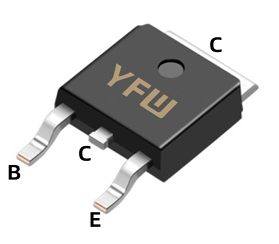Date:2025-05-27 Categories:Product knowledge Hits:356 From:Guangdong Youfeng Microelectronics Co., Ltd
A power transistor is a key component in many electronic circuits, designed to handle significant power levels. Understanding how to use it correctly is essential for ensuring circuit performance and reliability.
First, it's crucial to select the appropriate power transistor for your specific application. Consider parameters such as maximum collector current (Ic), maximum collector-emitter voltage (Vce), power dissipation capability, and frequency response. These parameters must align with the requirements of your circuit to avoid component failure.
When integrating the power transistor into a circuit, proper biasing is vital. Biasing ensures the transistor operates in the desired region, such as the active region for amplification or the saturation region for switching applications. For amplification, a voltage divider biasing network is often used to set the base current and stabilize the operating point. In switching circuits, ensuring the transistor is fully saturated or cut off is necessary to minimize power loss and ensure efficient operation.

Previous: Classification, Structure, and Principle of MOSFET